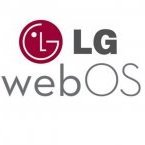By
pivotCE
2010 was a special year for webOS. It would mark the release of the Pre and Pixi Plus, alongside something special. That something special, would be the Pre successor and the very last smartphone to ever be released, under the “Palm” branding.
The Pre 2, code named “Roadrunner” first appeared in August of 2010, as a rumor but launched in November as a unlocked developer device in the U.S. and finally an actual carrier launch on Verizon in February of 2011.
The Pre 2 had the distinction to be the launch device for webOS 2.0 which would bring with it a bevy of upgrades and refinements to the much beleaguered operating system. A few of the most prominent updates and refinements include “stacking,” which allowed for open apps to stacked on one another for better organization of tasks and a powerful universal search engine called “Just Type,” which allowed you to search both the device and the internet for applications, questions videos etc.
A final and more solemn distinction, is that the Pre 2 would be the last webOS phone from Palm, until it was purchased by Hewlett Packard (HP) earlier that year. webOS 2.0, overall built upon the original 1.0 foundation and moved it forward in a very positive way. Universal Search alone, was one of the biggest additions. It expanded up the idea brought in webOS 1.0 and brought to the table a unique, simple, and powerful way of searching for items that would not be matched until the likes of Siri or Google Now, in the years to come.
The Pre 2 was very much a departure from the original Pre, yet in the same way built on the device that won so many people over and refined it. The overall build quality of the Pre 2 was a noticeable improvement over the Pre. Improved and slightly curved Gorilla Glass covered the front. A matte black plastic build with a enhanced touch/notification LED accompanied the front panel of the Pre 2. The back had an integrated Touchstone back cover. Making wireless inductive charging that much easier to adopt. Finally, one of the best design updates for the Pre 2, was a refined sliding mechanism, making the Oreo effect from the first generation Pre, almost non-existent.
In terms of hardware, the Pre 2 was a device that was a year behind in terms of specifications. The 1Ghz processor that powered the Pre 2, was not antiquated by any means by late 2010, but when compared to flagships during the time which were pushing the threshold to dual core chipsets, the Pre 2 came in just as single core was beginning to be over looked in the spec race. The Pre 2, had a similar array of sensors that most modern smartphones during the time. Wifi, Bluetooth, and ambient light sensors made the device feel more competitive with other 2010 smartphones.
In February of 2011, HP following it’s purchase of Palm, would unveil the next and final generation of devices running webOS. The devices they showed off were HP’s answer to the iPad, The HP Touchpad, Pre 3 and finally, a third more peculiar and somewhat more compact device, the HP Veer 4G.
The HP Veer was designed to be the next step in the evolution of the Pixi line of webOS devices. It came in two colors, black and white. Had a peculiar magnetic headphone jack that was prone to being lost (I went through two of them in my own time with the device) and was the first webOS phone to feature the Touch To Share magnetic coil that would allow users to share data between the phone and the upcoming HP Touchpad. Sadly, the software to enable the technology to work, would never arrive from HP. The phone ran the then new 800 Mhz Scorpion processor and on 512 MB of Ram which already put in a similar performance category as the Pre 2.
In terms of quality the Veer was a combination of improvements and backtracking. The overall design of the HP Veer was great. The much improved mechanism for the slide out, Pre-esque design of the Veer made it sturdy and feel really solid in the hand. The device was Touchstone compatible. The keyboard, was cramped and not designed for people with larger hands, yet it was sturdy and very solidly built. The phone was made of a single plastic shell that was very solid and curved beautifully around the body, showing off the pebble design ethos that was a trademark of Palm.
Although the overall design of the Veer was a great step forward for the Pixi line, it had several design flaws that kept it from really being taken more seriously as a webOS device. The first was the size of the device. In a literal attempt to keep up with both the Pixi line and to follow it’s own marketing message of “webOS in S, M, and L.” HP built the Veer to be very small phone with a lot of power underneath the hood. With a 2.6 inch screen, the phone was to small to do a lot of meaningful tasks. Web browsing was a squint fest. Composing email with the cramped keyboard was very hard to accomplish error free and although gestures work as well as previously, it was a little difficult to more precise gestures with the smaller gesture area.
In terms of Software and Performance the Veer in my time with it, was a very snappy device, that downloaded web pages quickly over ATT’s 4G network and was generally a pleasure to use. In terms of webOS software it ran essentially what the Pre 2 does, just in a smaller package. There is one real hardware difference worth noting is the inclusion of the TTS coil for sharing information. Software does exist for the coil to be used and a few developer units of the Veer have leaked that include this software yet it hasn’t been made available by HP. There is though a more iffy way of installing a custom build of webOS unto the device but the stability of the software and legal ramifications of messing with software that isn’t owned by the person who made the build make it a risky endeavor.
In terms of 2014 devices, The Pre 2 and Veer like the webOS devices before them are a worthy device for those who are looking for the more middle runners of webOS devices. They are stable devices that are capable with their enhanced hardware and software.
On a side note: In terms of usability for the devices. it is important to note that due to the general decline of upkeep for the software that Preware is near necessity if you plan on using your Pre 2 or Veer as anything more than a dumb phone that has a decent browser. As email (Google and Yahoo) recently released with new patches in order to make syncing a far less painful job.
I do recommend that the Veer be looked at with a grain of salt as it really is just a smaller Pre 2 and should only be used with those who have smaller hands or want the added TTS coil for TouchPad collaboration. The Pre 2 in my opinion is the best webOS smartphone I have ever used and I do recommend it. It lasted me through a very rough year of solid use and I keep it to this day as a reminder that a good phone can come in any shape or size. Although it lacks the TTS coil, I use the Pre 2 as the definition of why webOS was great and it’s phones were just as good. It was the very last phone Palm ever released and may have been its very best. The Veer on the other hand was the first that HP had released in years and it was a mixed bag with even more mixed results. It from a design standpoint was a solid device and alongside its nice internals, it had a chance of being even greater than the Pre 2, instead it was met with mixed reception due to it’s size.
The actual costs of both devices is mixed. Both the Veer and Pre 2 are sub 150 dollar phones that have great build quality and should be great additions for current and newcomers to the world of webOS.
So stay tuned next time when I review the last webOS devices released, The Pre 3 and the TouchPad.
link hidden, please login to view






Recommended Posts
Join the conversation
You can post now and register later. If you have an account, sign in now to post with your account.